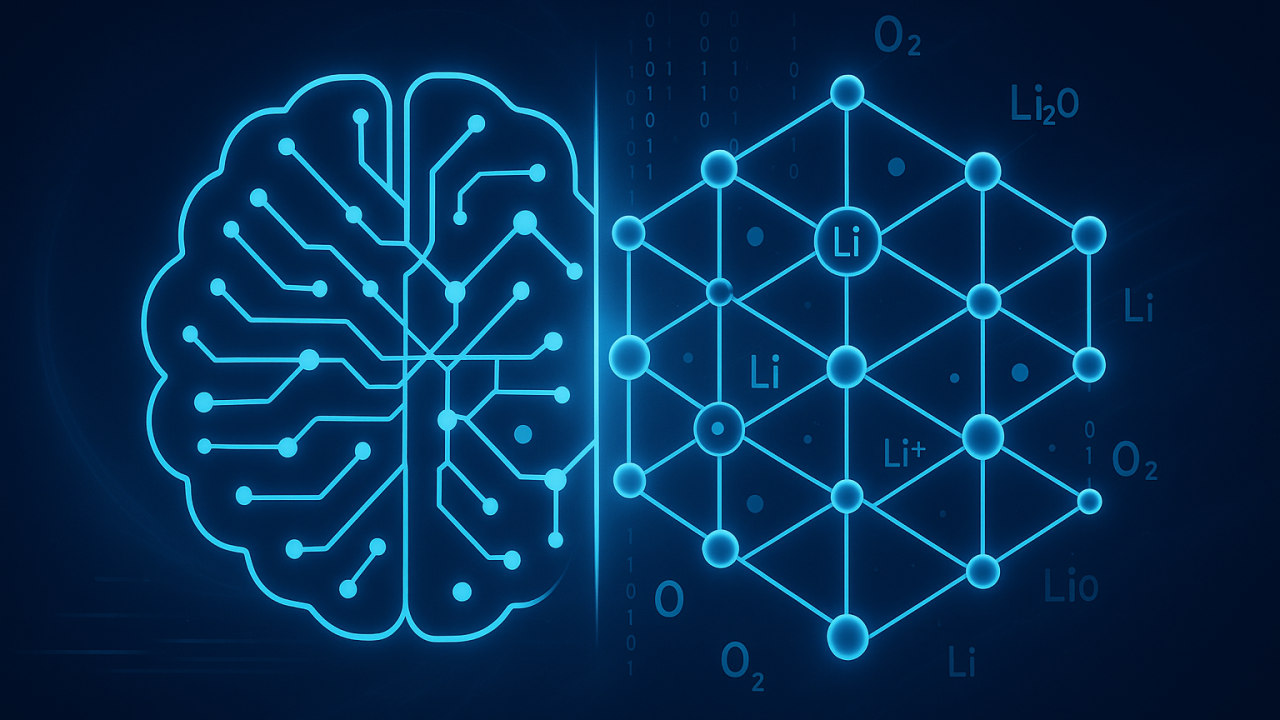Can AI Accelerate Battery Materials Discovery?
In battery innovation, many of the biggest breakthroughs have come not from new engineering tricks, but from the discovery and development of better materials. LiFePO4, for example, defied the prevailing understanding of lithium insertion mechanisms at the time of its discovery, yet went on to reshape the industry. More recently, lithium metal anodes have offered the promise of much higher energy density, but their reactivity and instability have forced innovation in other parts of the cell, particularly electrolytes, to enable their safe use. In this way, the cathodes, anodes, electrolytes, binders, and separators inside every battery ultimately determine its performance, cost, and safety.
Historically, discovering new materials has been slow, expensive, and often dependent on chance. The hope with machine learning and AI is that we can turn what has traditionally been an uncertain, trial-and-error process into something faster, more predictive, and more systematic. However, as with many AI applications in energy, there is real progress but critical challenges remain.
What’s Working
Where AI has shown the most traction so far is in predicting material properties and narrowing the universe of possible candidates.
Machine learning models trained on both quantum chemistry calculations and experimental datasets are now able to predict things like ionic conductivity, voltage windows, solubility, and diffusion barriers with far greater speed than traditional simulations.
This makes it possible to screen large libraries of cathode, anode, or electrolyte candidates and down-select before they ever reach the lab bench. Companies like Aionics, Inc. are pushing this further, building AI-driven pipelines that merge molecular simulations with machine learning to design better electrolytes and electrode additives. Their independent work and work with industry partners has already delivered promising candidates.
On top of that, open databases such as the Materials Project and the Open Catalyst Project are providing high-quality, accessible data that researchers and startups can use as a foundation.
What’s Missing
Still, there are some critical gaps that keep AI in materials discovery from being transformative today.
Models are only as good as the data they’re trained on, and most of that data comes from narrow or biased sources, making it difficult to generalize across different chemistries. A material that looks excellent in silico may turn out to be impossible to synthesize at scale, prohibitively expensive, or unstable under real-world conditions.
Most AI models also operate in isolation, ignoring the messy practical variables of manufacturing processes, cost targets, or raw material availability. And while the idea of closed-loop integration, where predictions feed directly into automated synthesis and characterization, which then refine the models, has been demonstrated, it’s still far from standard practice.
On top of that, much of the most valuable data sits behind corporate walls, meaning that models are limited to whatever slice of the materials universe their developers have access to. This lack of collaboration is hard to overcome, since questions about IP ownership, if datasets were opened and a materials breakthrough followed, often derail discussions before meaningful collaboration can even begin.
Lastly, AI has yet to demonstrate the ability to uncover entirely new phenomena. So far, it excels at optimizing what we already understand and at screening known materials for specific qualities. It’s a reminder that true breakthroughs like the discovery of LiFePO4, which would not have emerged from models trained only on data existing prior to LFP’s discovery, often come from insights that defy prevailing assumptions.
What’s Next
Looking ahead, the real breakthrough will come when AI is embedded in a more complete ecosystem.
Self-driving labs that combine AI predictions with automated synthesis and testing will enable faster learning cycles. Labs at places like Berkeley Lab, Argonne National Laboratory , Massachusetts Institute of Technology , and startups such as Aionics, Inc. , Kebotix , and Newfound Materials are actively pursuing this integration. Multi-modal data, spectra, microscopy, synthesis protocols, even text from the literature, will make predictions more robust.
Tools that can prioritize not just theoretical performance but also manufacturability, cost, and supply chain resilience will help bridge the gap between discovery and commercialization. And collaborative frameworks that encourage data sharing, at least in pre-competitive spaces, could unlock faster industry-wide progress.
Finally, success will depend on building teams that fuse expertise, materials scientists who understand informatics, and data scientists who understand electrochemistry.
AI won’t replace the chemist at the bench or the engineer in the pilot line. But if we get this right, it can amplify their efforts, reduce wasted cycles, and point us toward better candidates sooner. In that sense, the next generation of battery breakthroughs may not depend on luck in the lab as much as learning at scale.
By: Dr. Nicholas Grundish

